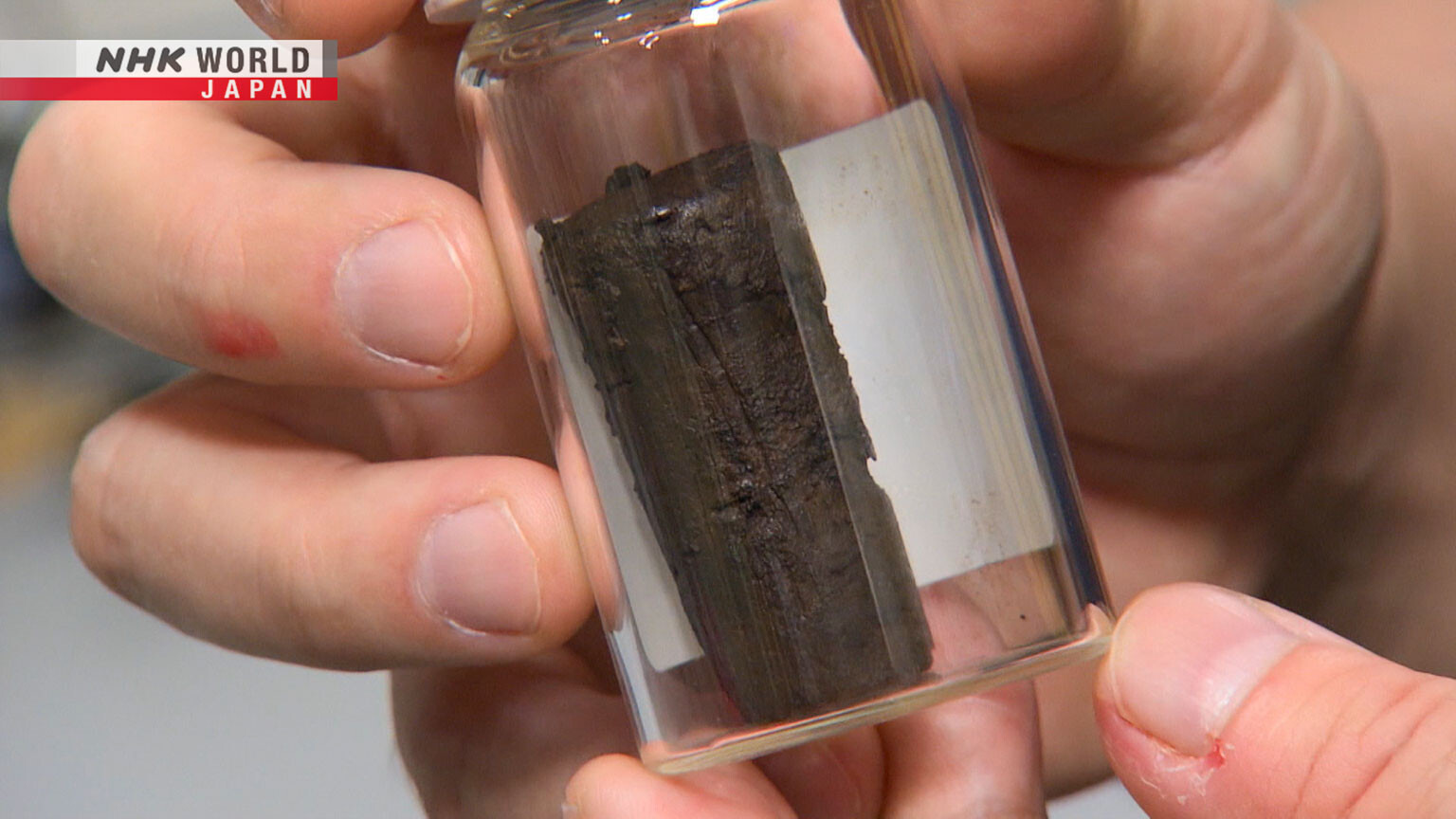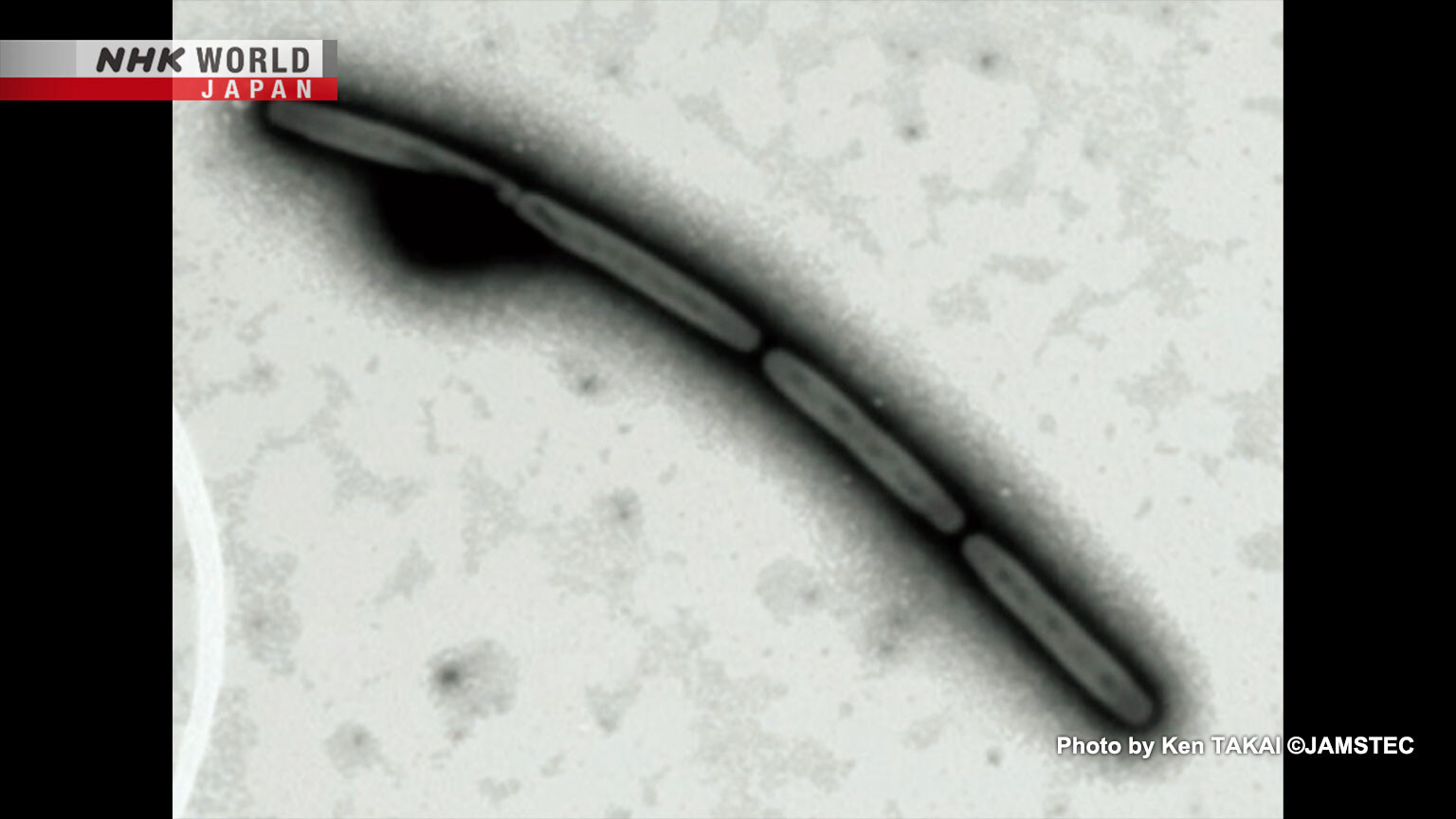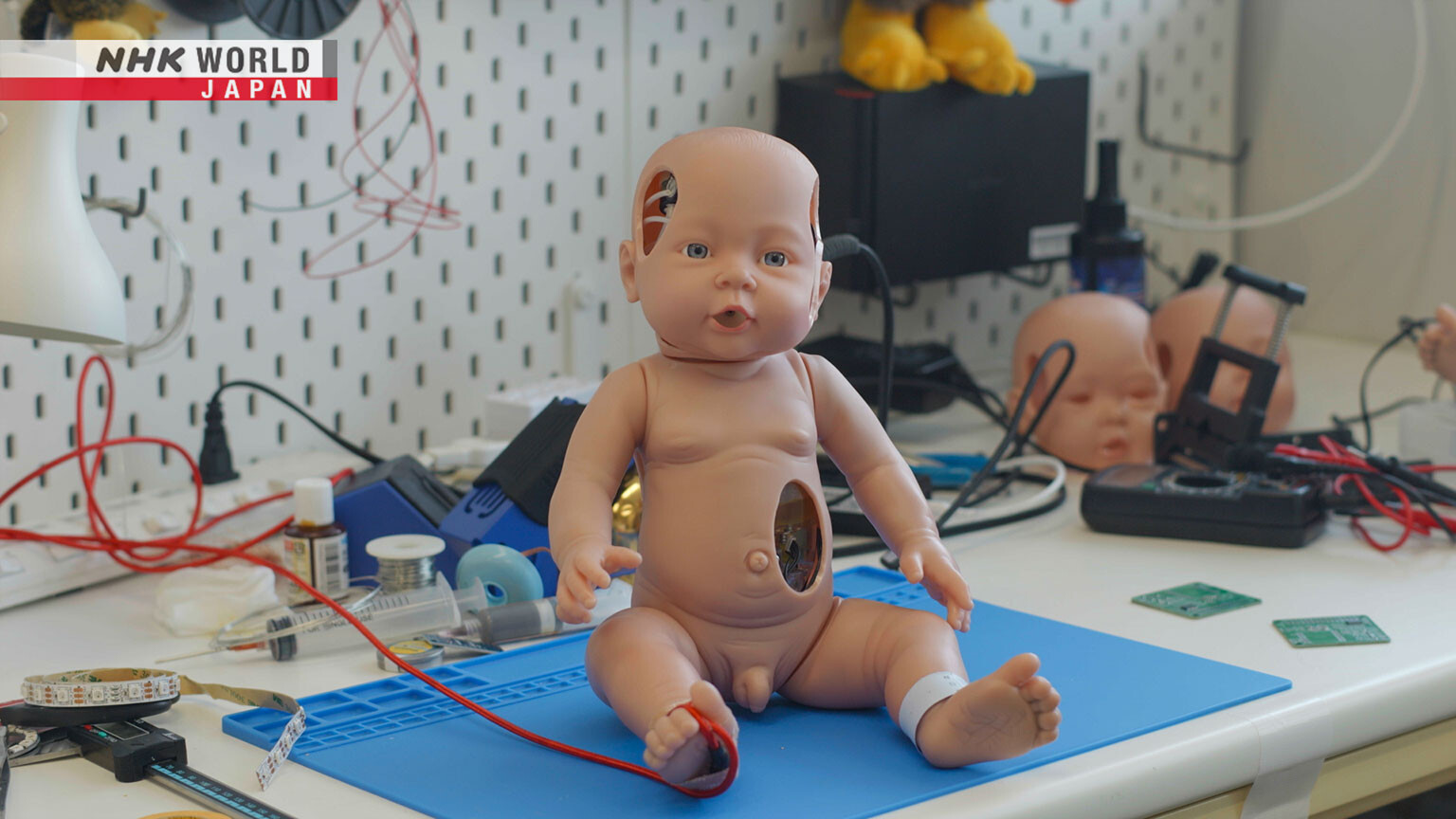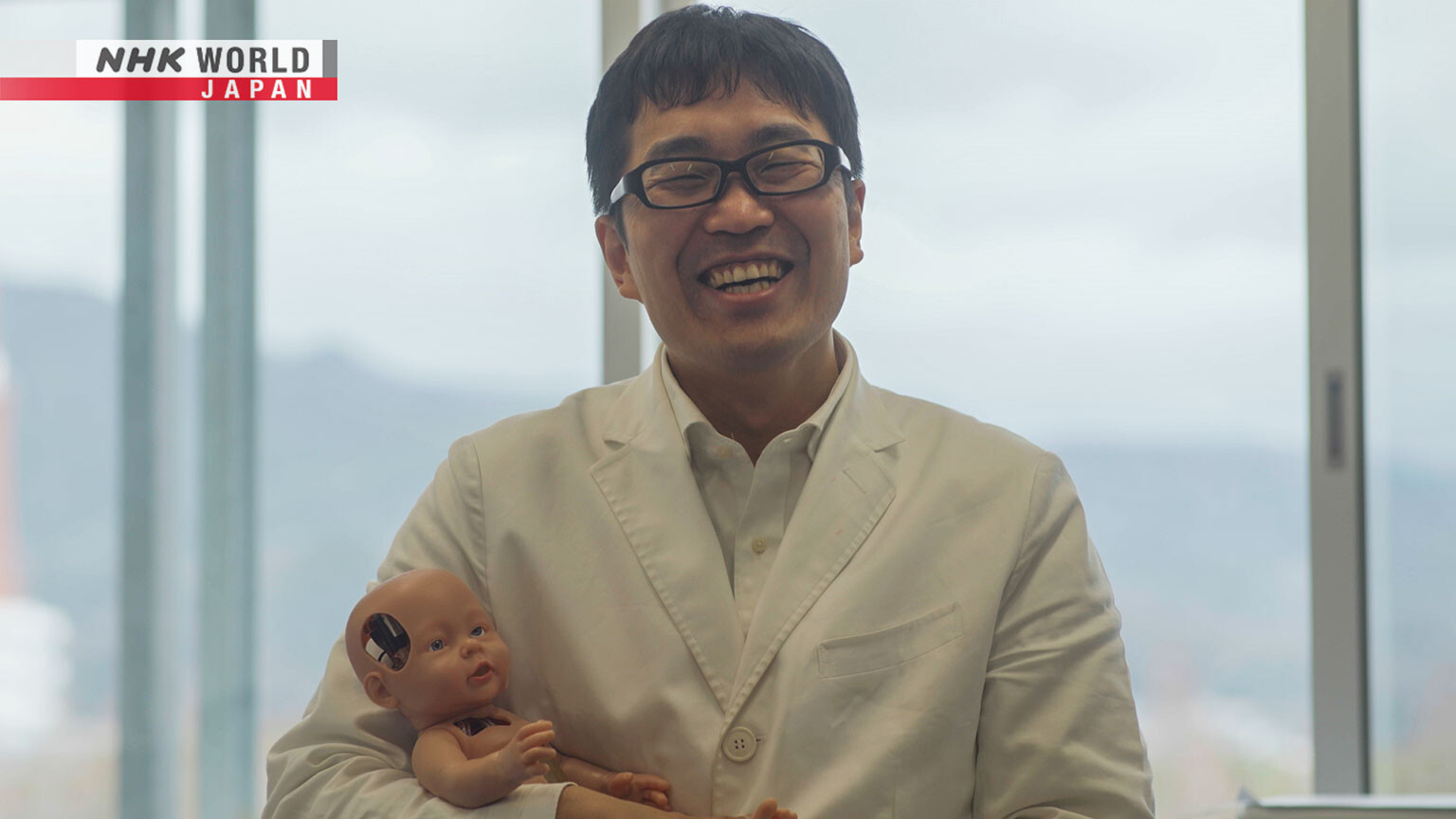Microorganisms Living in Extreme Environments
Japanese scientists discovered microorganisms that can survive for more than 100 million years deep below the ocean floor. What they can tell us about the big question, "What is life?"




Transcript
Hello, I'm Simon Wallis and I work at the University of Tokyo
where I study rocks and minerals and what they can tell us about the Earth's history and the way it works.
And if you take a simple crystal like this one here and you ask the right questions and use the right techniques,
it's amazing how much information you can get out to understand how this came to be the way it is.
And it's a real thrill as a geologist to discover some new aspect of the Earth that's not been seen before.
In this program Science View,
I want to introduce to you some of the scientific achievements that are going on in Japan
and the background stories to them, not only in the Earth sciences,
but also in the wider fields of science and technology.
So, let's set off now on our search for new discoveries and ideas,
some of which may change the world or the ways that we understand it.
Microorganisms can survive in some of the most extreme environments on Earth.
From deep-sea hydrothermal vents with temperatures at several hundred degrees Celsius...
to the extreme cold under the ice sheets of Antarctica.
They're also found in places where ordinary creatures cannot survive,
such as the desert with its dry land exposed to the beating sun.
But how do they survive in such extreme environments?
The latest research has revealed the "survival race" of microorganisms.
These living things are challenging the very idea of what it means to be alive.
They've been alive for a very long time, in which human history is just a moment.
Today, we'll take a look at microorganisms living in extreme environments,
and what they can tell us about the big question, "What is life?"
This scientific paper was published in 2020.
The results of this research made headlines all over the world.
Did mad scientists really revive microorganisms from 100 million years ago?
The paper was presented by Dr. Yuki MORONO.
This is a soil sample from 101.5 million years ago.
Living microorganisms were found inside.
Incredibly, microorganisms have lived in this sediment for over 100 million years.
The research began 14 years ago.
Morono and his colleagues started searching for microorganisms in an extreme environment.
That extreme environment was located in the South Pacific Ocean, more than 8,000 kilometers from Japan.
It's surrounded by an ocean current called the South Pacific Gyre,
which makes it difficult for nutrients to reach the area.
There's very little organic matter for microorganisms to feed on,
and it's called "the Earth's largest ocean desert."
They excavated the seabed at a depth of over 5,000 meters.
They collected sediment from the Cretaceous period, 101.5 million years ago,
when dinosaurs were still alive.
Upon closer inspection, they found a very small number of microorganisms
that were about 1/1,000th of a millimeter in size.
The particles in the surrounding sediment were very small and tightly packed together,
which suggests the microorganisms had been there for over 100 million years, unable to move.
It made me think that this living thing is amazing.
I was impressed.
But were they really alive?
Morono and his colleagues conducted an experiment to find out.
They gave food to the microorganisms to see if they would eat.
One of the foods was amino acids, which contain carbon.
However, carbon, which has an atomic mass of 12, is a common element in nature,
so it would be difficult to tell whether it had been newly taken in as food or not.
Instead they used carbon-13, which is rarely found in nature,
so it would be much easier to tell if the microorganisms ate it.
This image shows whether the microorganisms had eaten the food or not.
When given amino acids, they turn bright red or yellow.
And so...!
This result shows that they're able to eat food.
It was the first proof that they're truly alive.
And when they examined the microorganisms after feeding them,
they found that the number had increased 10,000 times after 60 days.
What living thing can exist,
buried in an environment where they lack energy and cannot even divide?
To begin with, I couldn't come up with an answer.
I find the idea that life can exist for over 100 million years in such an unfriendly environment quite mind boggling.
To learn some more about this, I've got a guest with me here
who works at the Japan Agency for Marine and Earth Science and Technology.
And he is Yuki Morono san.
And you've seen him in the video earlier on.
Mr. Morono, welcome.
Thank you very much.
Thank you.
This discovery overturned conventional knowledge.
Normally a paper goes through a process of peer review which takes around 6 months.
But in this case, it took 1.5 years.
What was the biggest issue? Was it contamination?
Yes, that was indeed a key point.
The Earth's surface is full of microorganisms,
so researchers must be aware of possible contamination.
We developed technology to detect microorganisms
in sediment deep beneath the ocean without contamination.
This world-leading technology enabled us to explain our results,
so the paper could be published.
You also brought a drill and a sample to the studio.
What kind of environment is it from?
We went to the middle of the South Pacific Ocean
where there is very little plankton on the surface.
There's also very little marine snow,
which usually becomes a nutrient source for microorganisms on the ocean floor.
There are very few nutrient sources in this environment.
How much nutrition do microorganisms need?
I suppose it's not much.
If microorganisms were the size of a human
they'd need 30 grains of rice a day.
30 grains!
That's about 3 kilocalories.
It'd be impossible for a human to survive.
So how did they survive for so long?
One hypothesis is that
because the microorganisms lack a nutrient source,
their metabolism slows down.
They may have been in a state of suspended animation
or some other form of long-term survival.
In fact, other microorganisms have been discovered in a variety of extreme conditions.
This is a microorganism found in a hydrothermal vent in the Indian Ocean.
It can survive in temperatures of up to 122 degrees Celsius.
This is a microorganism found 3,200 meters underground in a gold mine in South Africa.
It can survive in a strongly alkaline environment with a pH of 12.5, which is equivalent to bleach.
How many microorganisms can survive in such extreme conditions?
There are many microorganisms at the bottom of the ocean,
roughly 3 times 10 to the power of 29.
That's a lot!
It's about 30% of all microorganisms on Earth.
But why do they try to live in such a harsh environment?
I don't think they specifically chose to live in such an environment.
They just happened to be there, and had no choice but to try to survive.
At Morono's research institute, there is a collection of more than 200,000 samples from around the world.
One of these revealed the survival strategies of microorganisms living in extreme environments.
This core was drilled off the coast of Cape Muroto.
In general, the deeper the layer beneath the ocean floor, the higher the temperature.
This core is from 1,180 meters below the ocean floor, where the temperature is 120 degrees Celsius.
Ordinary microorganisms die
when they're exposed to temperatures higher than sterilization by boiling.
However, when they examined this core in detail, they discovered a strange phenomenon.
This graph analyzes the number of microbial cells in the entire core.
The vertical axes show the depth of the layer and the temperature.
The horizontal axis shows the number of microorganisms.
The number of cells decreases as the temperature reaches around 60°C.
At a depth of 200 meters and a temperature of around 30 degrees Celsius,
there are over 10,000 cells per cubic centimeter, but the number decreased around 60 degrees.
At around 80 degrees, there are only about 10 cells per cubic centimeter.
However, the number of cells starts to increase again from 110 degrees Celsius.
At 120 degrees, there are about 100 cells per cubic centimeter.
But why does the number of microorganisms suddenly increase in a high temperature environment like this?
This is a microorganism found in a layer at 120 degrees.
Based on various analyses, it was identified as a hyperthermophilic microorganism
that lives in hydrothermal vents on the ocean floor.
There was another important clue.
These red circles show the density of microbial spores.
The spores are scattered on the ocean floor in various places.
Morono's hypothesis is that a hyperthermophilic microorganism lived in
hydrothermal vents on the ocean floor tens of millions of years ago.
When the surrounding environment deteriorated,
for example when hydrothermal activity stopped, they released spores into the ocean.
The spores drifted in the ocean and eventually reached the ocean floor.
However, there were other microorganisms competing for organic matter as food.
Eventually, over tens of millions of years,
sediment slowly accumulated on top of the layer containing the spores and other microorganisms.
That acted like a blanket and prevented heat from escaping.
The microorganisms that couldn't withstand the rising temperatures ended up dying.
As more sediment accumulated, the layer became hotter.
Then the spores re-activated and became hyperthermophilic microorganisms.
At that point, they were in a comfortable environment with no rivals competing for food.
This is the result of a "race for survival"
where they adapt to their environment
and increase their numbers.
It demonstrates a special fighting strength in the race for living things to survive.
Yes, these microorganisms found the ability to survive in that environment.
I'd like to interview them about their experiences,
about what was difficult for them, and what they had to do to survive.
If I could interview them,
I'd be able to finish my research and retire.
Please don't say that.
Given this explanation,
do you think that life on other planets is possible?
Yes, researchers like me who study organisms in extreme environments
think this is becoming more likely.
Microorganisms have been found at high temperatures,
low temperatures, and high pressure,
which suggests they may be able to live in these kinds of environments on other planets.
We're more and more hopeful that we might find living things outside this planet.
It's very interesting and makes you wonder.
Are there other areas that you'd like to study?
I want to find out
how far down living things can exist.
So far, microorganisms have been found at depths where the temperature reaches 120°C,
but we don't yet know if they can exist at even higher temperatures.
The limit of life will be determined by whether these microorganisms
can survive without falling apart when the temperature rises even higher.
I want to find this limit.
Today you've made us think about many things,
including life, evolution, and what it means to live.
Thank you very much.
And now we're going to move to a new part of the program where we introduce the results of work by young scientists
and work that shows promise of being the start of something big.
Today, we're going to be looking at robots, not robots that lift up heavy weights
or do complicated calculations, but in this case, a robot that cries when it's hungry.
Anxiety and stress about childcare affect women during pregnancy and after giving birth.
This has become a growing problem in Japan in recent years and can even lead to suicide.
Today's Vanguard Researcher is trying to solve this problem with a groundbreaking invention.
This is robot researcher Dr. Takayuki KOSAKA.
This robot is called Crying Baby,
and it provides a realistic experience of looking after a newborn baby.
When a baby is born, there are many things to do,
such as breastfeeding and changing diapers.
If you've given birth before, you know what to do,
but if it's your first time you might find it difficult
and end up pushing yourself too hard.
I thought that by experiencing the difficulties of raising a child in advance,
it might be possible to reduce postnatal depression and childcare neurosis.
What kind of robot allows you to experience the difficulties of raising a child before giving birth?
I had the opportunity to experience it.
The baby has started to cry.
What should I do now?
I think the baby is hungry.
It wants some milk, so let's make some.
Make some?
This robot is very realistic.
It cries when it's hungry, and it drinks real milk as well.
It's designed so that it will not stop crying unless the temperature of the milk is around 40 degrees Celsius,
which is the appropriate temperature for newborns.
It worked!
However, 30 minutes after giving the milk...
The baby has started crying again. I wonder what it is this time.
Should I hold it?
The diaper is probably wet, so it needs changing.
The diaper is yellow and wet.
This is how the robot simulates excretion.
It's still crying.
After this I continued to soothe the crying baby for an hour.
My arms are so tired.
And I'm stressed and a little panicked.
I really can't imagine doing this all day every day.
Listening to the baby crying and crying and crying and not knowing what I'm supposed to do, that's so hard.
At least I know. Okay.
This is what it feels like to hold a baby for a long time.
This is what happens when it cries.
This is how I feed it. This is how I hold it.
I would feel a lot more prepared, I think.
Sensor technology and programming make this childcare experience possible.
The robot is programmed with five "tasks": hunger, excretion, sleep, mood, and emergency.
The "hunger" task will run approximately every 3 hours and make the baby cry for real milk.
The temperature of the milk is detected by a temperature sensor near the mouth.
The "excretion" task colors the milk with yellow ink to simulate excretion.
With the "emergency" task, a sudden change in the surrounding environment will cause the baby to cry.
The robot measures external stimuli such as vibration, brightness, and volume in real time.
It has brightness sensors inside its eyes, microphones in its ears,
and an acceleration sensor called an IMU inside a chip on its back.
Therefore, sudden changes in brightness, noise, or posture will cause it to cry.
The special feature of this robot is that you must respond to the various tasks that occur 24 hours a day.
There's no power button on Crying Baby.
So if it starts crying in the middle of the night,
you can't just turn it off.
Just like a real baby,
it won't stop crying unless you comfort it.
Kosaka had an unexpected reason to develop this robot.
After giving birth, his wife was taken to the hospital and he had to look after the newborn baby by himself.
We were talking about breastfeeding, so we didn't have any bottles or milk at home.
I wondered how to make the milk, and if it was the right temperature.
I didn't know why the baby was crying.
Even though I cradled him, he wouldn't stop crying.
I couldn't sleep because I was so worried about keeping him alive.
He decided to develop a robot because he thought that if he knew in advance how to look after a child, you could reduce stress.
Kosaka hopes that the robot will be used not only by mothers but also by fathers.
It will provide an opportunity for them to actively participate in childcare.
He runs corporate workshops, and encourages employees to take childcare leave.
I'd like employers to use the robot as well.
When employers experience childcare again,
they encourage their employees to take childcare leave.
I want to create a society where people support each other.
Here we have robots interacting with humans at a very early stage,
even before the human baby has actually arrived.
I thought the lack of an off switch was a nice touch as well.
I hope you enjoyed hearing about the science we examined today
and that you will join us in the next installment in our search for new discoveries and ideas.